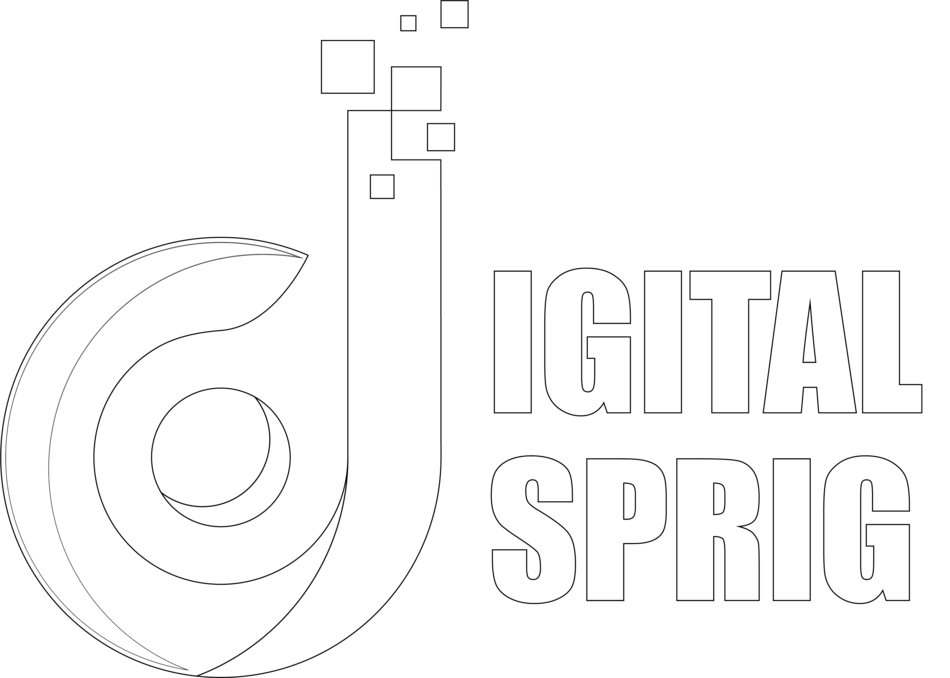Introduction
Social media has revolutionized how businesses connect with customers. Simply having a presence isn’t enough; today, it’s about fostering genuine engagement, building meaningful connections, and cultivating lasting relationships. This article provides a roadmap to strengthen your online presence through effective social media marketing. Whether you’re a small business owner or a seasoned marketer, this guide will equip you to navigate the social media landscape with confidence.

Understanding Social Media Marketing
Definition and Scope
Social media marketing involves using social platforms to promote products, services, or brands. It encompasses everything from posting text and image updates to creating and sharing videos, and everything in between. It’s about reaching your audience where they spend their time online and engaging with them in meaningful ways.
Why Social Media Marketing is Crucial for Businesses
With billions of people using social media worldwide, it’s an unparalleled opportunity to reach potential customers. Social media marketing helps increase brand awareness, generate leads, and drive sales. Moreover, it allows for direct interaction with customers, fostering loyalty and trust.
Setting Clear Goals and Objectives
Identifying Your Target Audience
Before diving into social media marketing, it’s essential to know who you’re trying to reach. Define your target audience based on demographics, interests, and online behavior. Understanding your audience helps tailor your content and strategies to meet their needs.
Establishing SMART Goals
SMART goals are Specific, Measurable, Achievable, Relevant, and Time-bound. For example, instead of saying “increase followers,” a SMART goal would be “gain 500 new Instagram followers in three months.” Clear goals provide direction and allow you to measure your progress.
Choosing the Right Platforms

Overview of Major Social Media Platforms
Different platforms serve different purposes and audiences. Here’s a quick overview:
- Facebook: Great for building a community and sharing a variety of content.
- Instagram: Ideal for visual content and engaging younger audiences.
- Twitter: Perfect for real-time updates and customer service.
- LinkedIn: Best for B2B marketing and professional networking.
- TikTok: Excellent for reaching Gen Z with creative video content.
Matching Platforms to Your Audience
Select platforms where your target audience is most active. For example, if your audience is primarily professionals, LinkedIn might be your best bet. If you’re targeting teens and young adults, focus on Instagram and TikTok.
Creating a Social Media Strategy
Developing a Content Calendar
A content calendar helps plan and organize your posts. It ensures a consistent posting schedule and helps balance different types of content. Your calendar should include key dates, holidays, and relevant events in your industry.
Balancing Promotional and Informative Content
While promoting your products is essential, too much promotional content can turn off your audience. Aim for a mix of informative, entertaining, and promotional content. For example, share industry news, tips, behind-the-scenes looks, and user-generated content.
Content Creation and Curation
Types of Content to Post
Variety is key. Here are some content types to consider:
- Articles and Blog Posts: Share informative and educational content.
- Images and Infographics: Visual content is highly engaging.
- Videos: From tutorials to behind-the-scenes looks, videos can boost engagement.
- Stories: Short, temporary posts that are great for quick updates and engagement.
Tips for Creating Engaging Content
- Know Your Audience: Tailor your content to their interests and preferences.
- Be Authentic: Authenticity builds trust.
- Use High-Quality Visuals: Eye-catching visuals grab attention.
- Tell Stories: Storytelling makes your content more relatable and memorable.
Leveraging Visual Content
Importance of Images and Videos
Visual content is more likely to be shared and remembered than text alone. It helps convey your message quickly and effectively. Moreover, platforms like Instagram and TikTok are entirely visual, making it crucial to excel in this area.
Tools for Creating Visual Content
There are numerous tools available to help create stunning visuals:
- Canva: A user-friendly design tool for creating graphics.
- Adobe Spark: Great for creating videos and social media posts.
- Piktochart: Ideal for making infographics.
- Lumen5: Turns blog posts into engaging videos.
Engaging with Your Audience
Importance of Interaction
Social media is a two-way street. Engaging with your audience helps build a community and foster loyalty. Respond to comments, ask questions, and encourage discussions.
Strategies for Engagement
- Ask Questions: Prompt your audience to share their thoughts and experiences.
- Run Contests and Giveaways: These can boost engagement and attract new followers.
- Share User-Generated Content: It shows appreciation for your followers and builds trust.
- Use Polls and Surveys: These tools engage your audience and provide valuable insights.
Utilizing Paid Advertising
Overview of Social Media Advertising
Paid advertising can amplify your reach and drive targeted traffic to your website. Social media platforms offer various ad formats, including image ads, video ads, carousel ads, and sponsored posts.
Setting Up Ad Campaigns
- Define Your Objectives: Whether it’s brand awareness, lead generation, or conversions, have a clear goal.
- Target Your Audience: Use demographic and interest-based targeting to reach your ideal audience.
- Set a Budget: Determine how much you’re willing to spend.
- Monitor and Adjust: Regularly review your campaign’s performance and make necessary adjustments.
Analyzing and Measuring Success
Key Metrics to Track
To evaluate your social media efforts, monitor these metrics:
- Engagement Rate: Likes, comments, shares, and retweets.
- Reach: The number of unique users who saw your content.
- Impressions: Total number of times your content was displayed.
- Click-Through Rate (CTR): Percentage of users who clicked on your link.
- Conversion Rate: Percentage of users who completed a desired action.
Tools for Analytics
Utilize analytics tools to measure your success:
- Google Analytics: Track traffic from social media to your website.
- Hootsuite Analytics: Comprehensive social media analytics.
- Sprout Social: Detailed reports and insights.
- Facebook Insights: In-depth analytics for Facebook pages.
Staying Up-to-Date with Trends
Importance of Staying Current
Social media is constantly evolving, with new features and trends emerging regularly. Staying current helps you stay competitive and relevant.
Resources for Trendspotting
- Social Media Examiner: Provides updates on social media trends.
- HubSpot Blog: Offers insights and tips on the latest trends.
- Google Trends: Tracks trending topics across the web.
- Industry Forums and Groups: Engage with peers to learn about new developments.
Collaborating with Influencers
Benefits of Influencer Marketing
Influencers have established credibility and a loyal following. Partnering with them can boost your brand’s visibility and credibility.
How to Choose the Right Influencers
- Relevance: Ensure the influencer’s audience aligns with your target market.
- Engagement: Look for influencers with high engagement rates.
- Authenticity: Choose influencers who align with your brand values.
- Reach: Consider the size of the influencer’s following.
Managing Your Online Reputation
Importance of Reputation Management
Your online reputation can significantly impact your business. Positive reviews and comments build trust, while negative feedback can deter potential customers.
Responding to Negative Feedback
- Stay Calm: Respond professionally and empathetically.
- Address the Issue: Offer solutions and take responsibility where necessary.
- Take the Conversation Offline: If possible, resolve issues privately.
Building a Community
Creating a Loyal Following
Building a community involves more than just gaining followers. It’s about creating meaningful connections and fostering loyalty.
Encouraging User-Generated Content
User-generated content (UGC) is any content created by your audience. It’s powerful because it’s authentic and builds trust. Encourage your followers to share their experiences with your brand and feature their content on your platforms.
Conclusion
Building a strong online presence through social media marketing takes time and effort, but the rewards are worth it. By understanding your audience, creating engaging content, and staying current with trends, you can effectively harness the power of social media. Start small, stay consistent, and watch your online presence grow.
How Digital Sprig Can Help with Social Media Marketing
At Digital Sprig, we specialize in creating comprehensive social media marketing strategies that align with your business goals. Here’s how we can help:
Customized Social Media Strategies
We understand that every business is unique. Our team develops tailored social media strategies that resonate with your target audience and meet your specific objectives.
Content Creation and Management
Our creative team excels in producing engaging content that captures attention. From eye-catching visuals to compelling copy, we ensure your content stands out.
Platform Selection and Optimization
We identify the best platforms for your business and optimize your presence on each. Whether it’s Facebook, Instagram, LinkedIn, or TikTok, we ensure your brand shines.
Audience Engagement and Community Building
Engaging with your audience is key to building a loyal community. We implement strategies to foster interaction, respond to comments, and build meaningful relationships with your followers.
Influencer Collaborations
Leveraging the power of influencer marketing, we connect you with the right influencers to amplify your brand’s reach and credibility.
Analytics and Reporting
We provide detailed analytics and reports to track the performance of your social media campaigns. Our insights help you understand what works and where to improve.
Ad Campaign Management
Our expertise in social media advertising ensures your ad campaigns are effectively targeted and optimized for maximum ROI. We handle everything from ad creation to performance analysis.
FAQs
How often should I post on social media?
It depends on the platform and your audience. Generally, posting once a day on platforms like Facebook and Instagram, and multiple times a day on Twitter, can help maintain engagement without overwhelming your audience.
What type of content performs best on social media?
Visual content like images and videos typically perform best. However, it’s crucial to mix it up with informative posts, articles, and user-generated content to keep your audience engaged.
How do I measure the ROI of my social media efforts?
Track metrics such as engagement rates, click-through rates, conversion rates, and sales attributed to social media campaigns. Tools like Google Analytics and platform-specific insights can help.
Is it necessary to be active on all social media platforms?
No, focus on the platforms where your target audience is most active. It’s better to have a strong presence on a few platforms than a weak presence on many.
How can I grow my social media following organically?
Consistently post high-quality content, engage with your audience, use relevant hashtags, collaborate with influencers, and encourage user-generated content to grow your following organically.

